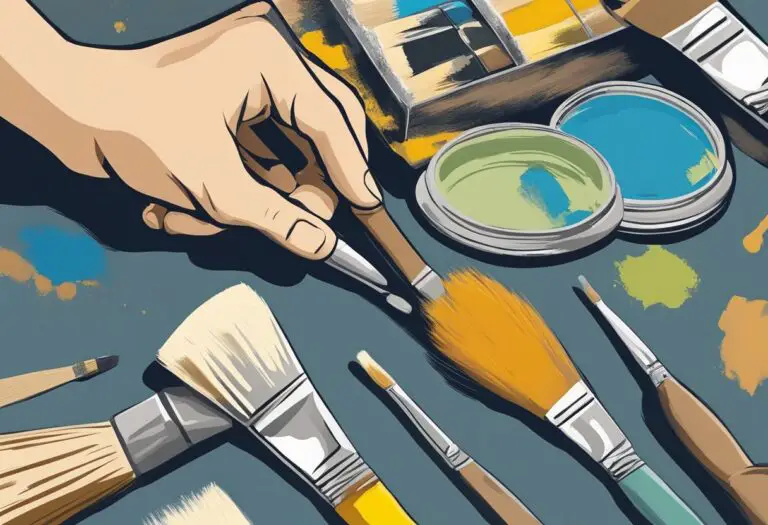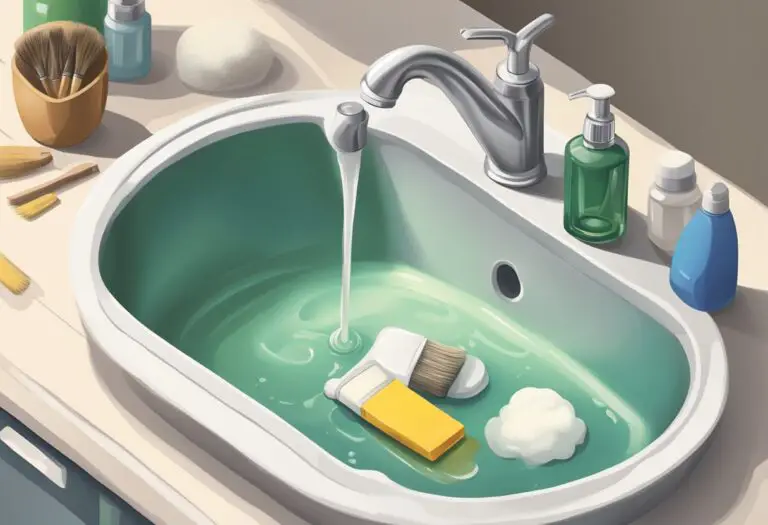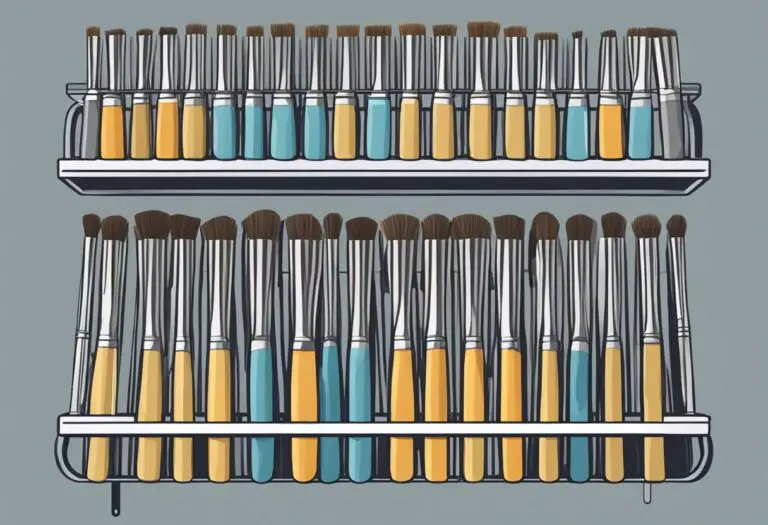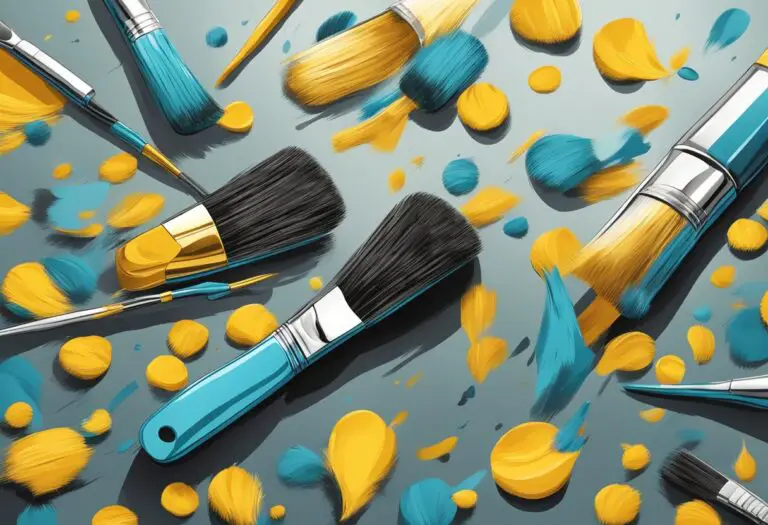How can I restore the original softness of natural hair brushes
Restoring the Original Softness of Natural Hair Brushes: Tips and Tricks
Natural hair brushes are a popular choice among artists for their ability to hold and distribute paint effectively. However, over time, these brushes can lose their original softness and become stiff and difficult to use. This can be frustrating for artists who rely on the quality of their brushes to create their work.

Fortunately, there are several methods that can be used to restore the original softness of natural hair brushes. One common technique is to use a brush cleaner and conditioner specifically designed for natural hair brushes. These products can help to remove any buildup of paint or other materials on the brush, while also conditioning the hair to restore its softness.
Another option is to use a mixture of warm water and mild soap to gently clean the brush. After cleaning, the brush can be reshaped and allowed to air dry in a horizontal position to prevent any damage to the hair. With proper care and maintenance, natural hair brushes can last for many years and continue to provide artists with the quality and performance they need to create their best work.
Understanding Natural Hair Brushes

Types of Natural Bristles
Natural hair brushes are made from the hair of various animals, including sable, goat, horse, and boar. Each type of bristle has its own unique properties that make it suitable for different types of painting or grooming.
Sable brushes are known for their softness and flexibility, making them ideal for watercolor painting. Goat hair brushes are stiffer and more resilient, making them suitable for oil painting. Horsehair brushes are strong and durable, making them suitable for both oil and acrylic painting. Boar bristle brushes are coarse and stiff, making them ideal for grooming and smoothing hair.
Reasons for Loss of Softness
Natural hair brushes can lose their softness over time due to a variety of reasons. One of the most common causes is improper cleaning and storage. If brushes are not cleaned properly or left in a damp environment, the bristles can become stiff and brittle.
Another reason for loss of softness is excessive use. Over time, the bristles can become worn and frayed, making them less effective at holding paint or distributing oils.
Finally, exposure to heat or sunlight can also cause natural hair brushes to lose their softness. It is important to store brushes in a cool, dry place away from direct sunlight to prevent damage.
By understanding the types of natural bristles and the reasons for loss of softness, one can take steps to properly care for and restore natural hair brushes to their original softness.
Routine Maintenance for Softness
Proper Storage
Proper storage of natural hair brushes is essential to maintain their softness. Brushes should be stored in a dry and cool place, away from direct sunlight and humidity. Exposure to sunlight and moisture can damage the natural fibers of the brush, which can result in loss of softness and flexibility.
When not in use, brushes should be stored in a protective case or cover to prevent dust and dirt from accumulating on the bristles. It is also advisable to store brushes separately to prevent them from getting tangled or damaged.
Regular Cleaning Techniques
Regular cleaning is crucial to maintain the softness of natural hair brushes. Brushes should be cleaned after every use to prevent the buildup of product and dirt on the bristles. This can be done by gently washing the brush in lukewarm water with a mild shampoo or soap.
It is important to avoid using hot water, as it can damage the natural fibers of the brush. After washing, the brush should be gently squeezed to remove excess water and then left to air dry in a well-ventilated area.
In addition to regular cleaning, it is recommended to deep clean natural hair brushes once a month. This can be done by soaking the brush in a mixture of lukewarm water and vinegar for about 30 minutes, followed by a gentle wash with shampoo or soap.
By following these routine maintenance techniques, natural hair brushes can maintain their softness and flexibility, ensuring a smooth and effective application of makeup or paint.
Deep Cleaning Process

Selecting the Right Cleaning Agents
Before starting the deep cleaning process, it is important to select the right cleaning agents. Natural hair brushes are delicate and require gentle cleaning solutions. Avoid using harsh chemicals that can damage the brush fibers. Opt for mild cleaning agents such as baby shampoo, mild dish soap, or vinegar.
Step-by-Step Cleaning Guide
Follow these steps to deep clean your natural hair brushes:
- Wet the brush bristles under lukewarm water. Make sure that the water is not too hot as it can damage the brush fibers.
- Apply a small amount of cleaning agent to the bristles. Use your fingers to gently work the cleaning agent into the bristles.
- Rinse the brush under running water until the water runs clear. Make sure that all the cleaning agent is removed from the brush.
- Gently squeeze the excess water from the brush bristles.
- Use a clean towel to blot the brush bristles and remove any remaining water.
- Reshape the brush bristles and leave the brush to air dry. Avoid using a hair dryer or any other heat source to dry the brush as it can damage the brush fibers.
By following these simple steps, you can restore the original softness of your natural hair brushes and extend their lifespan.
Restoring Softness

Natural hair brushes can lose their softness over time due to various factors such as exposure to heat, humidity, and chemicals. However, restoring the original softness of natural hair brushes is possible with proper care and maintenance. This section will discuss two key steps to restore the softness of natural hair brushes: conditioning the bristles and drying and reshaping.
Conditioning the Bristles
Conditioning the bristles of natural hair brushes is an essential step in restoring their softness. To condition the bristles, follow these steps:
- Wet the bristles of the brush with lukewarm water.
- Apply a small amount of mild shampoo or conditioner to the bristles.
- Gently massage the bristles with your fingers to distribute the shampoo or conditioner evenly.
- Rinse the bristles thoroughly with lukewarm water.
- Use a clean towel to remove excess water from the bristles.
- Reshape the bristles to their original shape.
Conditioning the bristles of natural hair brushes will help to keep them soft and supple, which will improve their performance when used for painting or makeup application.
Drying and Reshaping
Drying and reshaping the bristles of natural hair brushes is another essential step in restoring their softness. To dry and reshape the bristles, follow these steps:
- Use a clean towel to remove excess water from the bristles.
- Reshape the bristles to their original shape.
- Lay the brush flat on a clean towel to dry.
- Avoid exposing the brush to direct sunlight or heat, as this can damage the bristles.
- Once the brush is completely dry, store it in a clean, dry place.
Drying and reshaping the bristles of natural hair brushes will help to prevent them from becoming misshapen or damaged, which can affect their performance and longevity.
In conclusion, restoring the original softness of natural hair brushes is possible with proper care and maintenance. Conditioning the bristles and drying and reshaping them are essential steps in this process. By following these steps, natural hair brushes can be kept soft, supple, and in good condition for years to come.
Preventative Measures for Longevity

Best Practices
To maintain the original softness of natural hair brushes, it is important to follow some best practices. Firstly, it is recommended to clean the brushes regularly after each use. This can be done by gently washing the brushes with lukewarm water and mild shampoo. After washing, the brushes should be air-dried by laying them flat on a clean towel.
Secondly, it is important to store natural hair brushes properly. Brushes should be stored in a clean and dry place, away from direct sunlight and heat sources. It is also recommended to store brushes with their bristles facing upwards to prevent them from getting bent or damaged.
Thirdly, it is important to use natural hair brushes only for their intended purpose. Using them for other purposes, such as applying makeup or painting, can cause damage to the bristles and affect their softness.
Common Mistakes to Avoid
There are some common mistakes that people make when using natural hair brushes that can affect their softness and longevity. One of the most common mistakes is using hot water to clean the brushes. Hot water can damage the bristles and cause them to become brittle and lose their softness.
Another mistake is using harsh chemicals or detergents to clean the brushes. These can strip the natural oils from the bristles and cause them to become dry and brittle. It is important to use mild shampoo or a brush cleaner specifically designed for natural hair brushes.
Finally, it is important to avoid pulling or tugging on the bristles when cleaning or using the brushes. This can cause the bristles to become loose or fall out, which can affect the softness and overall quality of the brush.
By following these best practices and avoiding common mistakes, natural hair brushes can be maintained to their original softness and longevity.







